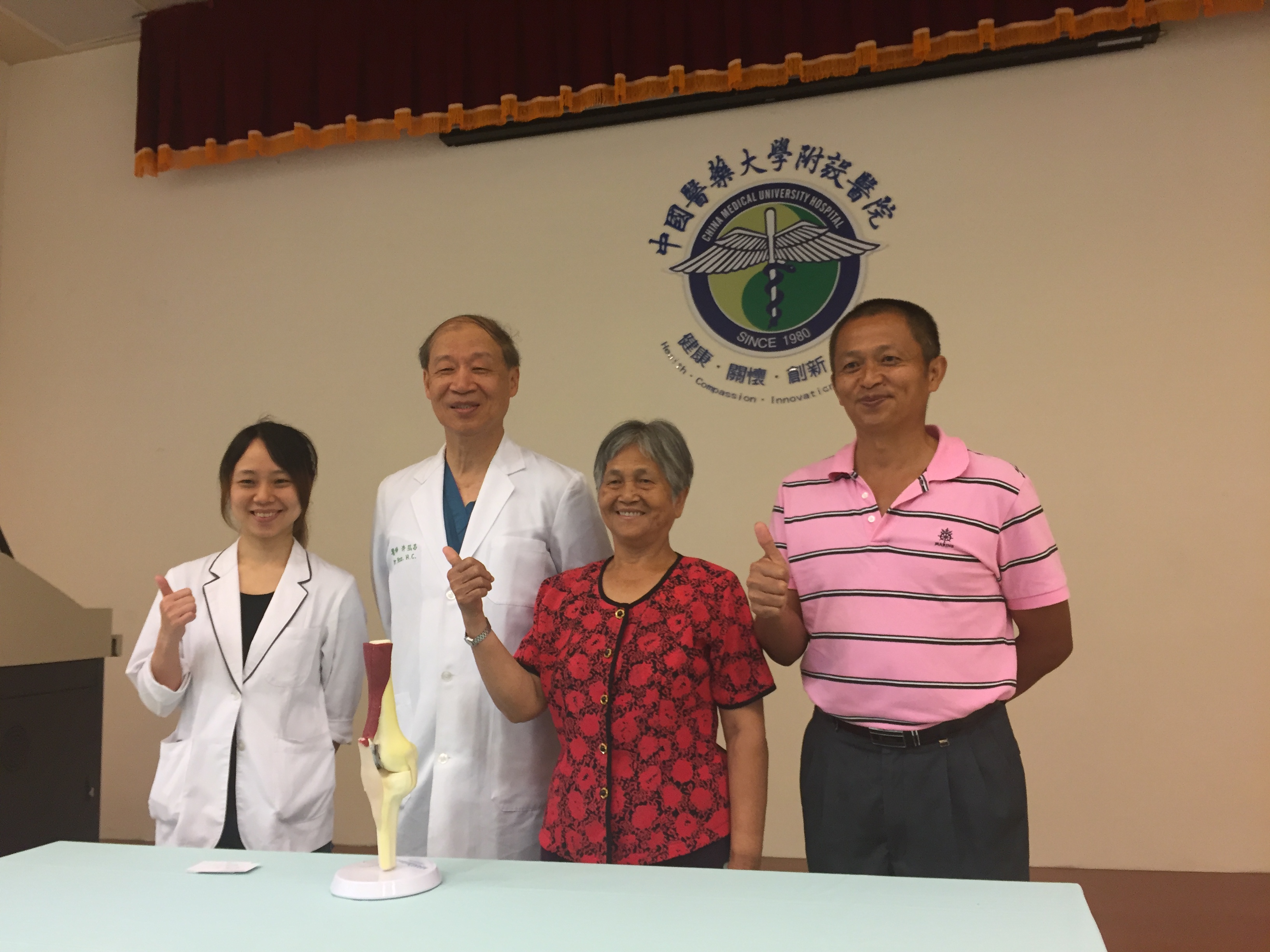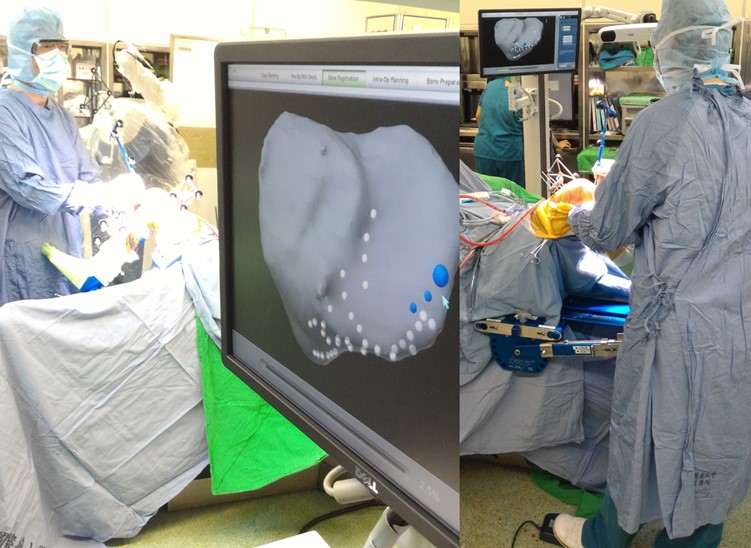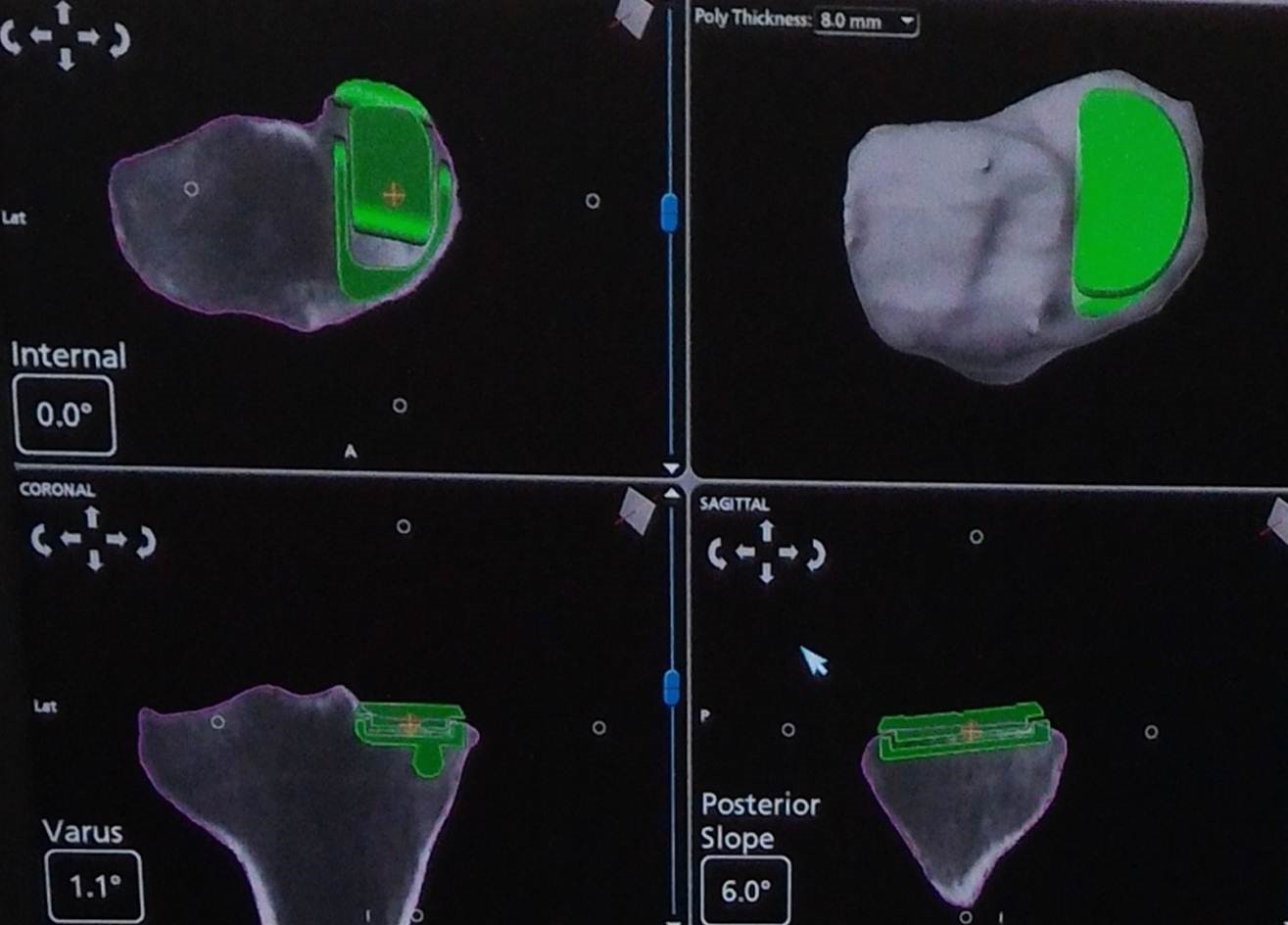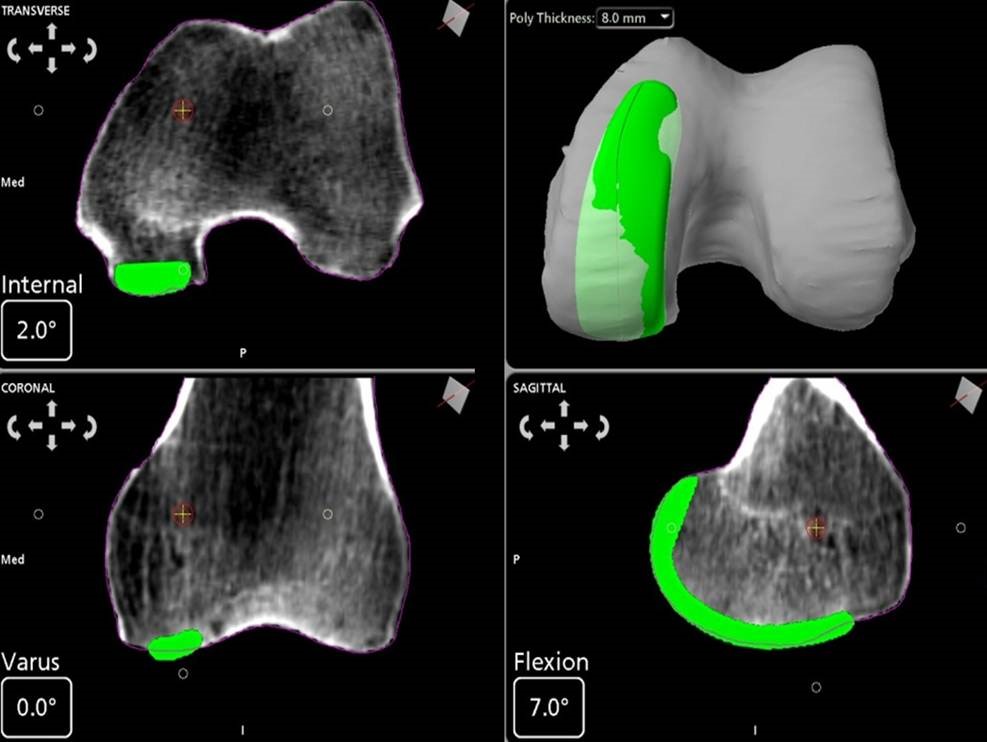News and Award
About CMUH
Minimally invasive, precise and dynamic 3D balanced surgery – orthopedic robot is here!Small wound, less pain and faster recovery for joint replacement

The invention of robotic guidance arm opens up a new chapter in orthopedic surgery
Taiwan's knee joint replacement technology keeps pace with the world by introducing the technology of robotic guidance arm for knee joint replacement to Taiwan about 2 years ago. The robotic arm acts as the third eye and third hand of an orthopedist. Under the assistance of robotic arm, the precision for partial knee replacement is enhanced with smaller wound and faster recovery (Figure 1 shows the conditions during surgery). Our experiences suggest that most patients can walk home on the same day or the day after the surgery, while some can even go to work directly after being discharged from the hospital. This technology saves post-surgery recovery time for better living quality, indicating that orthopedics has a new progress in terms of minimally invasive, precise, dynamic, 3D, and balanced surgery.
It is not a dream that patients will perceive the same conditions before and after the surgery.
CMUH Department of Orthopedics Director Horng-Chaung Hsu stated that robotic guidance arm knee replacement causes less damage with fewer scars on the tissues, which can better preserve the previous knee joint of patients while patients often feel as if no surgery has been performed on them. Moreover, patients will recovery to their initial state in terms of daily activities or kinematics, as they do not need to “learn” again and “adapt” as one would in traditional total knee replacement. In some cases, the previous kinematics is even “changed” and hence the surgery is widely recognized by patients with higher satisfaction.
Studies also reveal that the precision technology for medial partial knee replacement will improve the curvature of patellofemoral joint while reducing the level of continuous deterioration. Precise lateral partial knee replacement can also improve the curvature of medial tibiofemoral joint as well as synovial cavities. It is clear that precise partial knee replacement will alleviate the conditions from degenerative arthritis triggered by one area or appeared in other joints, thereby preventing the disease from being caught in a vicious circle.
Precise execution of navigation during surgery
Research further suggests that the failure rate of robotic guidance arm can be lowered to 1/10 of that of traditional surgeries while the precision can be upgraded to 3~4 times. Horng-Chaung Hsu stated that robotic guidance arm requires a pre-surgical 3D CT scan on the affected area (scanning from the hip joint to the ankle joint), followed by the conversion into the robotic arm for pre-surgical plans and execution during surgery. The physicians can interact with the computer of robotic arm visually and through touching during surgery, adjusting the patients to the most ideal position, stationary or dynamic, at all times (Figure 2, 3), and thereby enhancing the surgical precision.
This surgery also outperforms computer navigation surgery as computer navigation surgery can only guide you through on how to perform but could not control the “execution,” therefore “exceptions” could still occur. Robotic guidance arm differs in aforementioned visual and touching aids in terms of execution, which ensures more precise execution. For example, this is similar to using automobile navigation to guide you from point A to point B but it will not help you drive (execution) safely and precisely.
Global status of robotic guidance arm joint replacement
There are more than 380 robotic arm machines in 15 countries of the world and over 100,000 people have received the surgery. CMUH has also completed 100 cases of this surgery, where patients are highly satisfied since this surgery can achieve the objectives of minimally invasive, precise, dynamic evaluation, 3D balance, and fast recovery. This technology has been applied to total hip and total knee replacement to help more patients.
【Figure 1】

【Figure 2】

【Figure 3】

CMUH Department of Orthopedics Director and Professor Horng-Chaung Hsu



